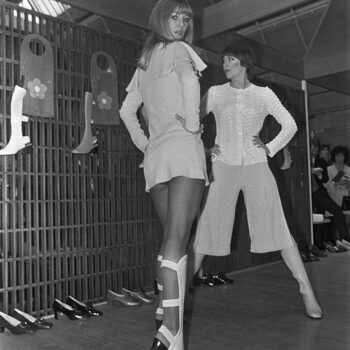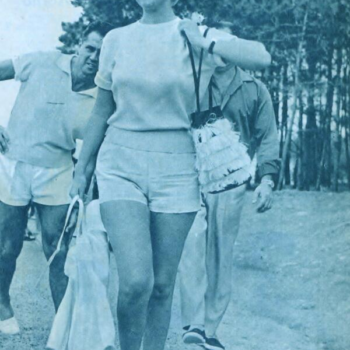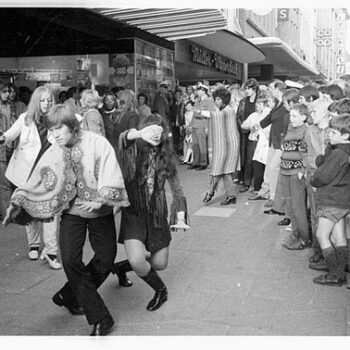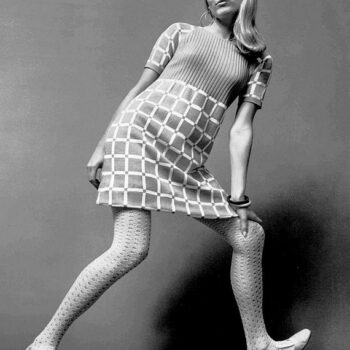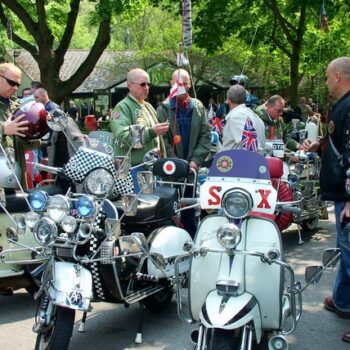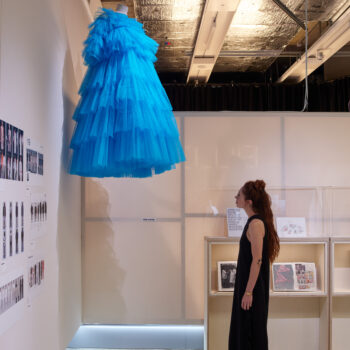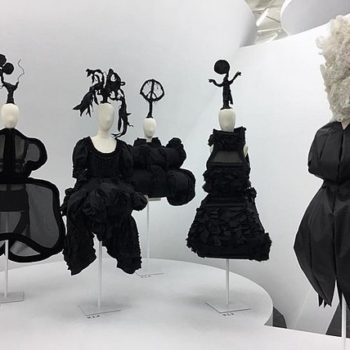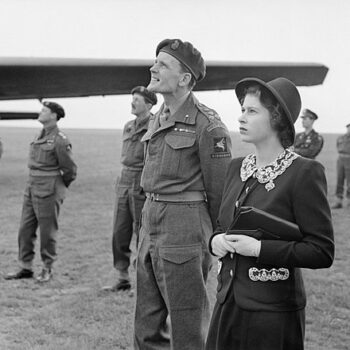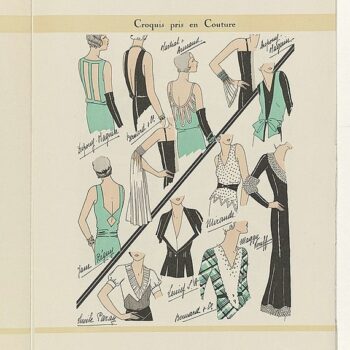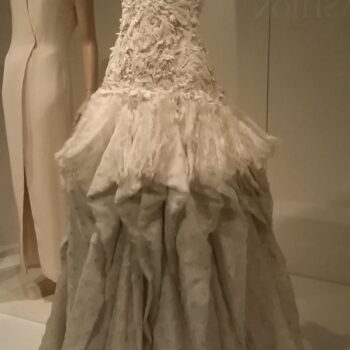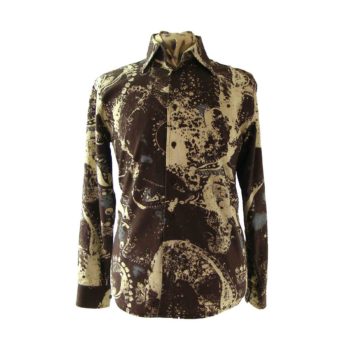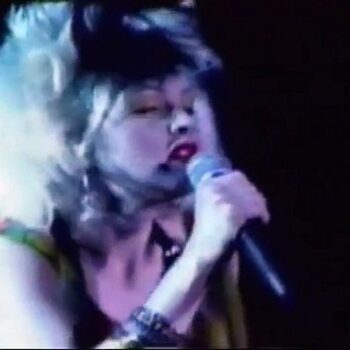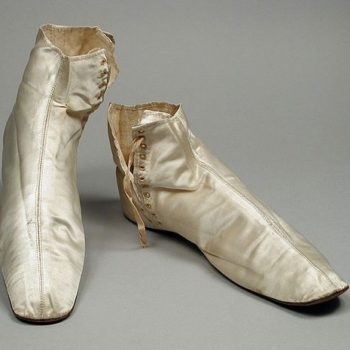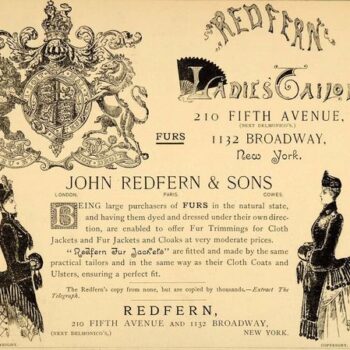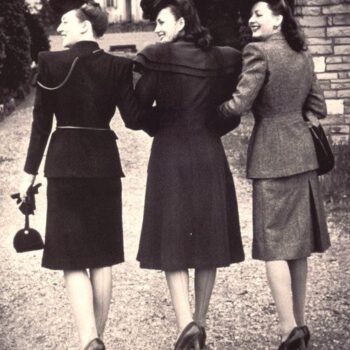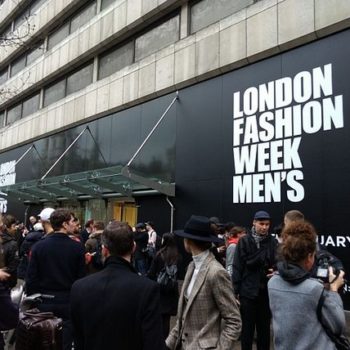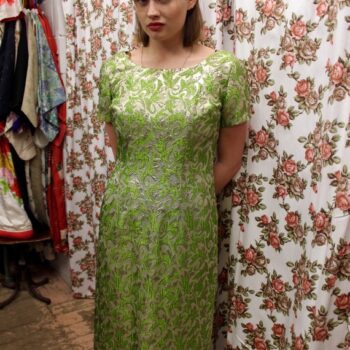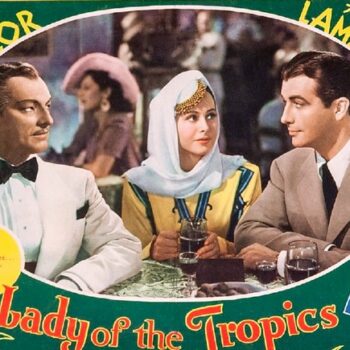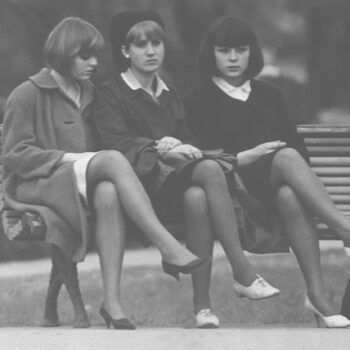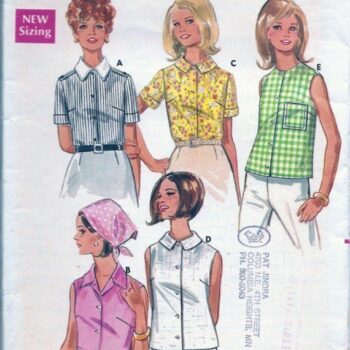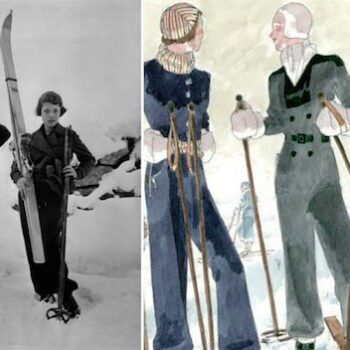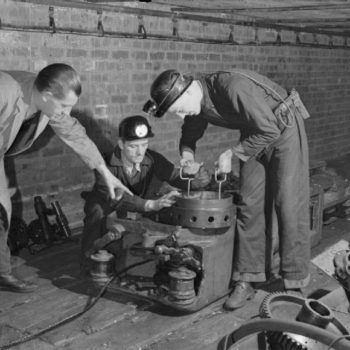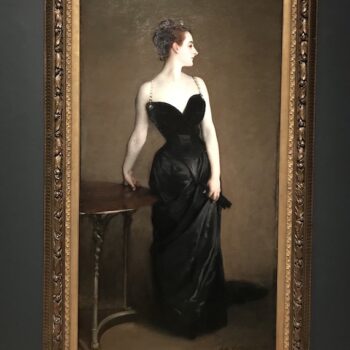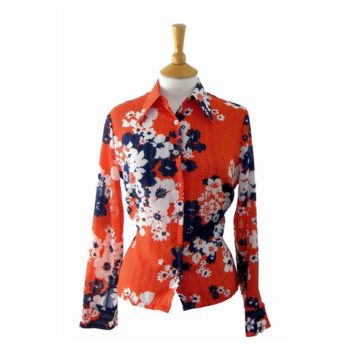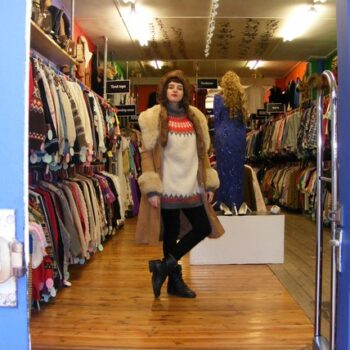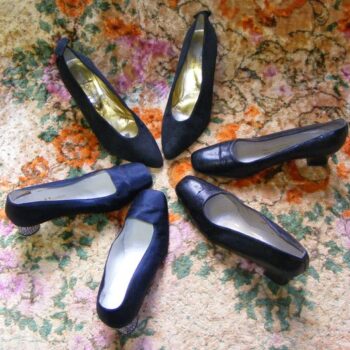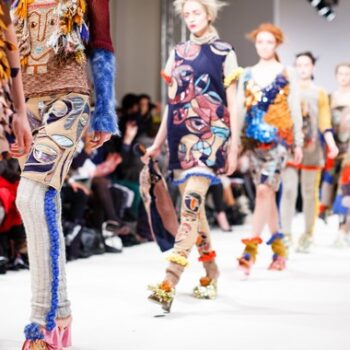Mary Quant at the V&A
May 4, 2019Mary Quant is most famous for her miniskirt. But though she certainly made a lot of them, she didn’t actually invent them. Instead, the Mary Quant at the V&A sets out to show just how revolutionary her work was in other ways. Trousers as sexy, fashionable clothes, tights, bright colours, simple, Apple-esque branding – she did it all with aplomb.
Co-curated by Jenny Lister and Stephanie Wood, the exhibition is just joyous. Although there’s no doubt she was a prodigious hard worker and shrewd businessperson, it doesn’t seem like Quant lost her appetite for fun at any stage. And she was her own best model and proponent of the Mary Quant lifestyle. Her photo is everywhere. Wearing an easy fit jersey mini dress she hauls down a bolt of fabric in the stockroom, or stands still as Vidal Sassoon trims her iconic bob, shiny hair catching the light.
In addition, the colour in the photographs is not just confined to the clothes. Quant was in favour of multi-racial casting in her models and the photo shoots aren’t just restricted to the usual etiolated blonds. Etiolated Afro Caribbean, South East Asian and East Asian women also regularly appear.
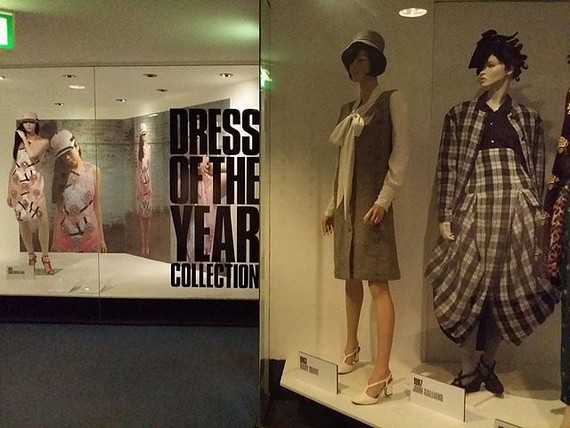
From left to right Dresses of the Year for 2013 Christopher Kane, 1963 Mary Quant and 1987 John Galliano
Mary Quant at the V&A – from the Swinging Sixties to the Seventies
The show focuses on the first 20 years of her career, from 1955 when she launched her brand to 1975. It includes over 200 garments and accessories, many from the designer’s personal archive and lots from the V&A’s own holdings. It opens with some fussy early works – pretty, but stiff and not at all what we associate with the designer. But like most artists, she soon finds her feet and suddenly the show blooms with jolly primary coloured joy.
Quant’s time period was just after the war. Many women had started wearing trousers and jumpers as a comfortable, casual option when they were working or tending their allotments. But Quant decided to actively subvert menswear. She produced elegantly tapered tailored trousers which were cut to a woman’s figure in wool, or wide legged early bellbottoms in cotton drill. High waisted A Line skirts were in mannish grey suiting with a matching cropped waistcoat, feminine blouse in pinstripes and kipper tie in oversized polka dots, or brown wool dresses with tailoring details worn with soft white blouses. These were office appropriate outfits, tailored and pulled together but with a playful edge well before the power suits of the 1980s.
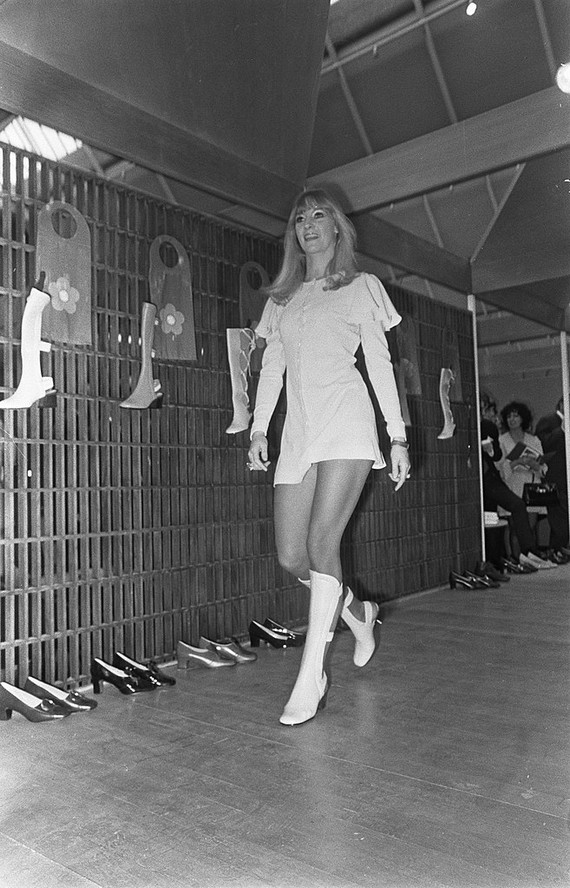
Mary Quant show, boots collection, 1969
Green and Magenta Alligators
Her favourite style of dress was quite short but not tight. Most skirts are A Line, and the shapes semi-fitted. Dresses are often in an apron or pinafore style, designed to be worn over high turtlenecks or blouses. And by the way, did you think that the onesie was invented a few years ago? Not at all. Here is a playful orange terrycloth all-in-one, complete with feet and a huge white zip down the front.
Other sections focus on her “Alligator” rainwear. Rubber ponchos came in duckling yellow, grass green and magenta, and there were handbags to match in the same fabric.
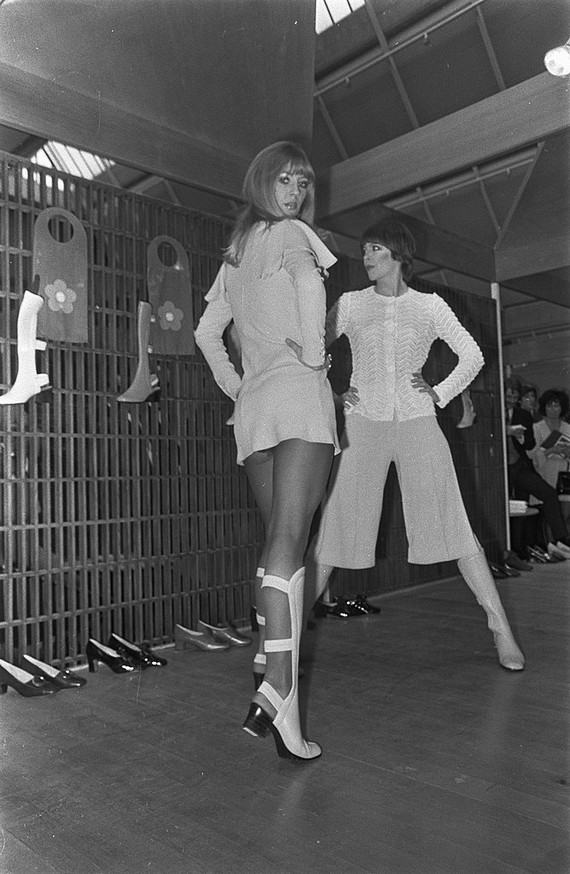
Mary Quant summer collection show, 1969
Mary Quant – Jersey Minidresses
“I want free-flowing, feminine lines that compliment a woman’s shape… I want relaxed clothes, suited to the actions of normal life” said Quant, and so she designed her jersey dresses. She used a type of jersey previously used only in sportswear and underwear (and where have we heard that before?). Her dresses were designed with not only matching berets and tights but also undershorts, so that they could be worn on the streets with impunity. This was really pushing the boundaries of good taste, when jersey leisurewear was suitable only for relaxing at home in.
The mannequins used reflect the idea of the clothes being active and dynamic. Many are standing, legs widely planted but on tiptoe for some reason like a Barbie doll awaiting her high heels. But others stride, dance, and even exercise on the floor.
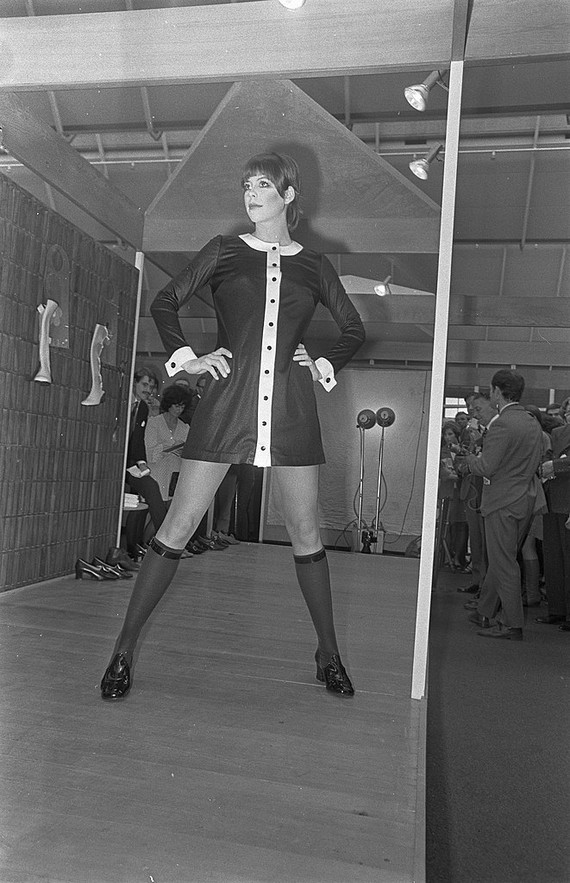
Summer boots at shoe fair in Utrecht, 1969. model Diabolo
Daisy dolls
And speaking of dolls, Quant even had her own little Daisy doll, dressed in tiny versions of the designer’s hits. Makeup, underwear, home furnishings and accessories get their own section. There are lots of her cosmetics here, in their original packaging. The packaging design still looks fresh, like something you’d find today, with her stylised daisy rendered in black and white or silver on plain black and white packaging. They have fun names: “Body Gleamer” pearlised body cream, “Cheeky” blusher, and “Jelly Babies” gel mascara.
Some of the range is based on art supplies, so comes in tubes like oil paints or packets of “crayons”. It wasn’t new even in the 1960s for designers to expand their brand this way as many even top couturiers around the 1900s had perfumes, sportswear departments, etc, so announcements that Quant was “ahead of her time” in licensing and marketing aren’t accurate, but they certainly helped to disseminate the brand. As did tales of her groovy original shop on the King’s road, filled with attractive shop assistants and loud music.
Mary Quant – Treasured by Many
The idea of Quant’s designs is that they were feminist and democratic. Compared to the clothes from Dior in the exhibition next door, which covers something of the same time frame, of course they were. They allowed women comfort, movement and fun, and with their mass production were affordable for the middle classes. Like Biba, they were part of the regrettable movement towards fast fashion, a fact which is wisely not mentioned here.
Showing just how many people both bought her clothes and treasured them enough to keep them until now, a call out by the V&A for rare examples from members of the public received more than 1,000 responses. Some have been lent for the exhibition, and some were not only lent but also donated to the V&A holdings after the show. Other memories come in the form of photographs, and these are shown in a central carousel on the top floor.
This exhibition will be fun for those who remember it personally, and a great introduction to the brand for those who don’t.
Mary Quant at the V&A is on at the Victoria and Albert Museum until 16thFeb 2020.
Mary Quant at the V&A. Image Courtesy V and A.



